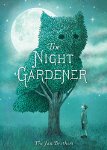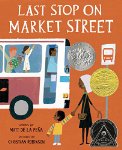I used to be more of a dog person than a cat person, but then I adopted Katie, a tiny black and white kitten, who had been literally thrown away. Katie, who never weighed more than five pounds, taught me to appreciate the true nature of cats. Despite her rough start in life, she was loyal, strong-willed, sensitive, and loving, and I am grateful that she was part of my life for more than a decade. Though she was very small and not very strong, Katie never let anything get her down. She was an inspiration.
Today's poetry title explore one woman's relationship with her cat Boris, and through her narrative we get see how Boris shaped her life and how he helped her understand herself better.
Boris
Cynthia Rylant

Poetry
For ages 14 and up
Houghton Mifflin Harcourt, 2006, 0-15-205809-5
Not that long ago her last cat died, and she decided that
she would not be getting any more cats. She would be a dog person from here on
out and spare herself all the trials and tribulations that come with cat
ownership. No more hairballs, no more worrying that the cat has been eaten by a
coyote, and no more “howling, spitting fights.” No, cats will no longer be a
part of her life.
Then the local
shelter puts a storefront in town and she has to walk past that storefront
every day; she has to see the cats sitting in the window, all of whom so badly
want a home. She holds out for two months and then she goes into the store. She
says that she will get one female cat “and no more.”
Not long after,
she walks out of the store with two cats, a male and female. The cats are
siblings and she could not bear to separate them. The male is Boris, a
beautiful grey fellow who in his own quiet way promises that he will “be good.”
It isn’t long
before Boris is a member of the family. The dogs accept him and when they go
too far they get a swat across the nose to keep them in line. Of course it also
isn’t long before she is worrying that the eagles might try to harm Boris. She
asks him to never “stand on a beach / beneath them,” for surely if he does they
will be measuring and assessing him to determine if he is too big and heavy
from them to carry him off.
Boris is full of
surprises. She knows that his former name was Hunter and imagines at first that
it is a “designer-label sort of / name.” It turns out that Hunter was not some
preppy name at all. The name describes what Boris is. He is a hunter and soon
he is bringing her all kinds of furry and feathered gifts.
When a new cat
moves in next door she is sure that Boris is going to take grave exception to
the cat using the next-door deck that he has claimed as his own. She full
expects to see fur flying, and yet this is not what happens at all. Boris takes
the newcomer in hand, adopting him and treating him like a little brother who
needs someone to show him what is what.
This magnanimity
is not offered to an elderly cat that Boris and his owner meet when they are
out one day. This time the hunter in Boris comes to the fore and he bowls over
the poor old fellow without a thought. She is embarrassed, and the encounter
gets her thinking about aging and what waits for them both in the future. Will
they two be like the old cat who dared to walk on Boris’ path? Will they two
stand against younger whippersnappers who try to bully them?
In this
remarkable book, nineteen free verse poems take us into the world of the
narrator and her cat. Through her interaction with Boris we find out about her
own fears, worries and insecurities. We laugh with her as Boris watches, and
bats at, birds that he sees on the TV screen. We laugh too when she describes
how much she enjoys playing “spinnies” with her cat companion. Her pain is
tangible as she tells us what it was like when Boris went missing for ten days,
and we understand why she worries about moving to a new house that Boris might
not approve of. Being owned by a cat is not for the faint of heart, but the
experience teaches us a lot about ourselves, and through our cats we learn a
great deal about love, patience, and compassion.































